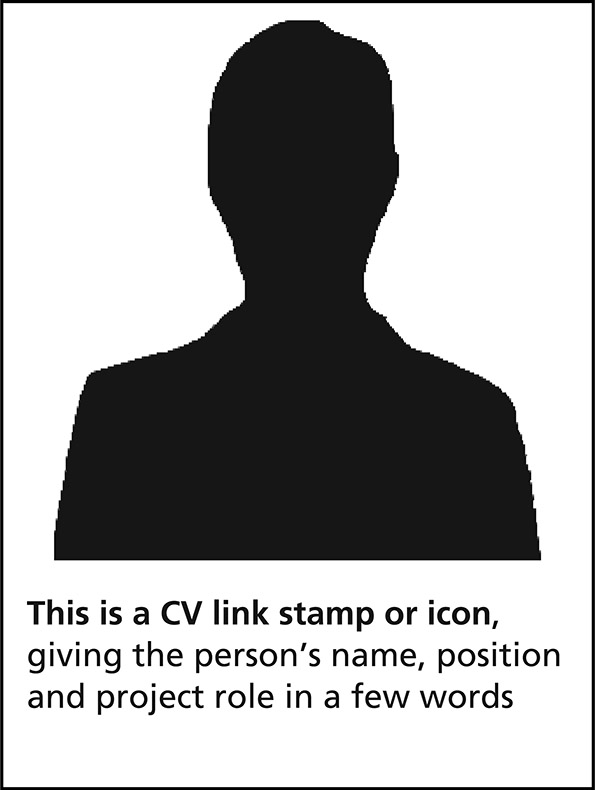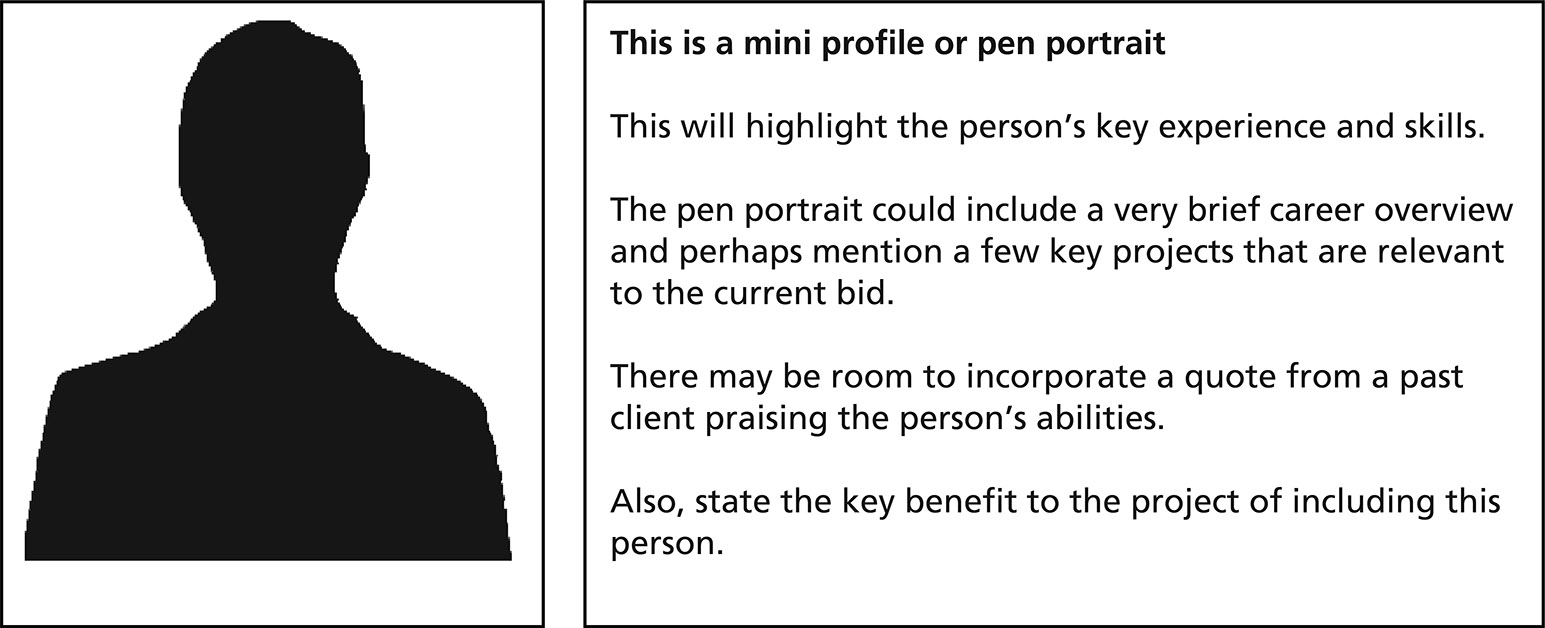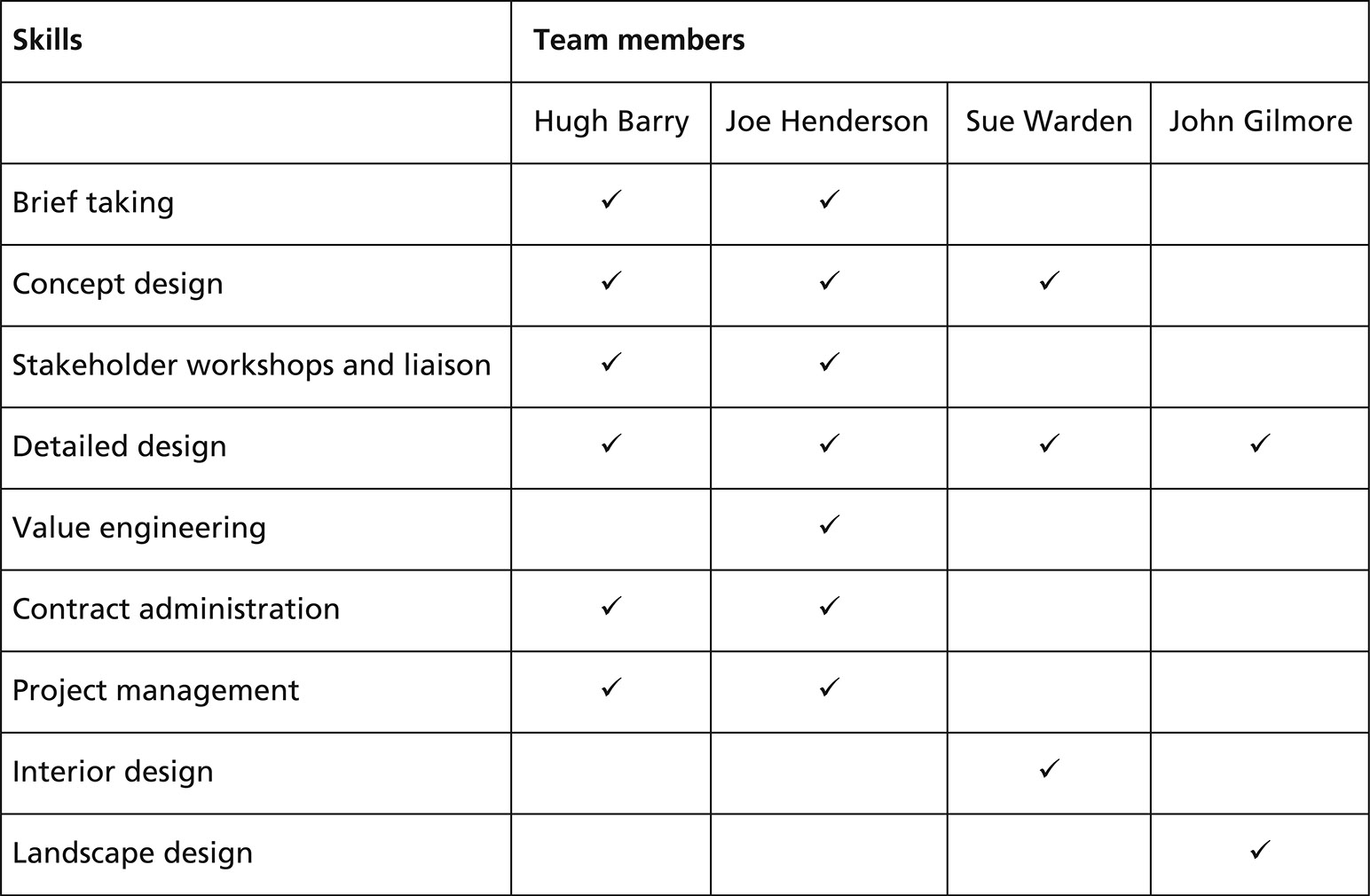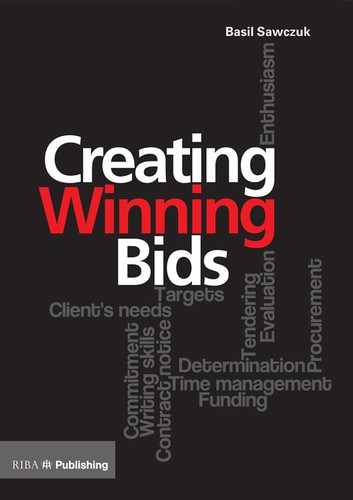Chapter 9
Other considerations
Incorporating third party endorsements
Third party endorsements or testimonials are among the most powerful forms of proof you can offer a prospective client about your ability to deliver their project. Clients are reassured by hearing from your other clients just how competent and reliable you are. These endorsements should be used within:
- tenders and proposals
- case studies and project sheets
- brochures
- your website.
In fact, they can be used wherever you want to prove the point you are making.
The best way to obtain a third party endorsement is to ask for it. This request could be part of a feedback questionnaire or be a specific request.
If you have client feedback reviews, then include a request for an endorsement. However, a word of caution here: don’t just ask your client for their view of your service because they will probably give you a very general comment, such as:
Having a collection of general comments, however complimentary, is not going to be sufficient. The best approach is to ask your client to comment on certain aspects of your service. The client might even ask you to prepare a draft for modification. This has the following benefits:
- the endorsement praises specific aspects that are relevant
- it saves the client the time and trouble of thinking what to say
- a single endorsement can be used for several different aspects of your service and the project.
When obtaining third party endorsements, consider how you will use them. You may want to show that you have relevant experience, have provided a good service and possess a whole range of specific skills. So take some time to prepare a list of things that a prospective client might want to know. This might vary from sector to sector or with building type. Take a look at past tenders or bids and identify which questions the clients ask most frequently. Are there recurring themes? Let’s assume that Wren Barry Architects have just finished the design of a school and are now looking for client endorsements that could be used to help win future bids. After some consideration, they have decided that they want endorsements to show their strengths in the following areas:
Therefore, Wren Barry Architects could perhaps send a letter to the headmaster along these lines:
From this we might expect something on the lines of:
This endorsement might seem to be long, but the idea is that it can be harvested for a number of quotes to cover many different requirements, as shown below. Given the endorsement above, you would be able to produce quotes to incorporate within bid documents along the lines of:
And so on, for innovative approach, team coordination and other aspects of the project. In addition, a request to the other consultants involved in the project covering technical issues could generate further endorsements on points such as:
From this single project it can be seen that it is possible to generate many useful quotes as endorsements for future use. Ensuring that you follow this process for every project will result in a whole library of endorsements to prove a variety of claims that you may make in your bids and proposals. Always review your endorsements to make sure that questions that are currently being asked at the tender and pre-qualification stage are covered. If new issues start to arise, then incorporate these within your requests to clients when seeking endorsements.
Consider how you will use the endorsement
Supplying client references
During the course of the pre-qualification stage you may be asked to supply several client references. You will be asked for the contact details of one or more clients who could be contacted directly for feedback on their thoughts on your suitability for the project under consideration.
When providing contacts bear in mind the following caveats:
- don’t give out the details of the same client as a contact too frequently; they might not take kindly to being constantly inundated with requests for information
- obtain your client’s permission to be used as a reference client
- alert your clients to the fact that they might be contacted in respect of a certain project for which you are bidding
- talk through the project that you are pitching for with your client and ask them if they would be good enough to highlight certain qualities in your service delivery. These qualities will be those that you have identified as being important to the prospective client.
Using CVs
The client will want to know who will be working on their assignment, should you be successful in your bid. The most common way to provide such information within a bid is to include CVs. The various formats are detailed below:
| CV link stamp or icon | This is similar to the project stamp in size (see Chapter 8) and will include a face portrait and a few words giving name, position in the firm and role within the project. Although not a CV in itself, it can be used to identify a key person within the bid documents and provide a link to the full CV, which may appear in the appendix (see Figure 9.1). |
| Mini profile or pen portrait | This is similar to the mini project profile in size and will be used to summarise the person’s career, skills and role within the project. This is useful if a full CV is not requested and gives an insight into a person’s credentials. Some clients will actually ask for a pen portrait (see Figure 9.2). |
| Full CV | This is the more traditional format. The CV may be one or more pages long and will show:
|
Figure 9.1:
Typical format for a CV link stamp or icon
Figure 9.2:
Typical format for a mini profile or pen portrait
It is important for a firm that is selling professional services to have regularly updated CVs of its team available. There are three basic stages in the development of a CV for inclusion within a bid document. These are:
| Stage 1: base CV | As each team member completes a project, develops new skills, gains new qualifications or is promoted, this information should be added to their CV. |
| Stage 2: sector, building-type or skill specific CV | From the base CV, various specialist CVs can be created. These can be sector specific or cover just one building type or a particular skill set. The main point is that the client will want to see how appropriate the person is for their project; if you are pitching for a new science block at a school you will not want to feature housing projects on the CV. |
| Stage 3: bid-specific CV | When you know the particular requirements of the project for which you are bidding you must modify your most appropriate Stage 2 CVs to reflect the client’s needs. |
When creating a bid-specific CV you should ask yourself:
If the bid is for a new science block in a school then do not focus heavily on housing project experience. If the person does not have specific school science block experience, then include other relevant experience, such as similar projects or other projects for schools. If there is no relevant experience then seriously reconsider your chances of being successful. Use the résumé section, which may be placed at the beginning of the CV, to bring out the specific points that you want the client to notice. Also, to make this more bespoke, mention the client and project within this résumé, as shown in the following example:
To improve your chances of success, always rewrite the CVs and make them as bespoke as possible. Where several CVs are included, make sure that they are all in the same format (which might be specified by the client). This is particularly important if you are teaming up with external consultants. Figure 9.3:
Typical layout for a skills matrix If the project is large or complex, then the client will probably want to be reassured that your proposed team has all the relevant experience and skills. In this situation the inclusion of an experience or skills matrix will be a useful addition to your portfolio of CVs. This
will also enable you to show additional skills and experience that might not have been asked for but could be relevant and might help to differentiate you from the competitors. The example in Figure 9.3 shows a simple typical format. When using a skills matrix, try to use skills descriptions that the client will understand, especially if they have not identified such a skill requirement in the bid documents. In the example shown in Figure 9.3 the client might not know what is meant by ‘value engineering’ or ‘stakeholder workshops and liaison’. Therefore you may need to explain within the submission what these skills are and their consequent client benefits.
▸ Summary Checklist
Creating a bid-specific CV
Using an experience or skills matrix

